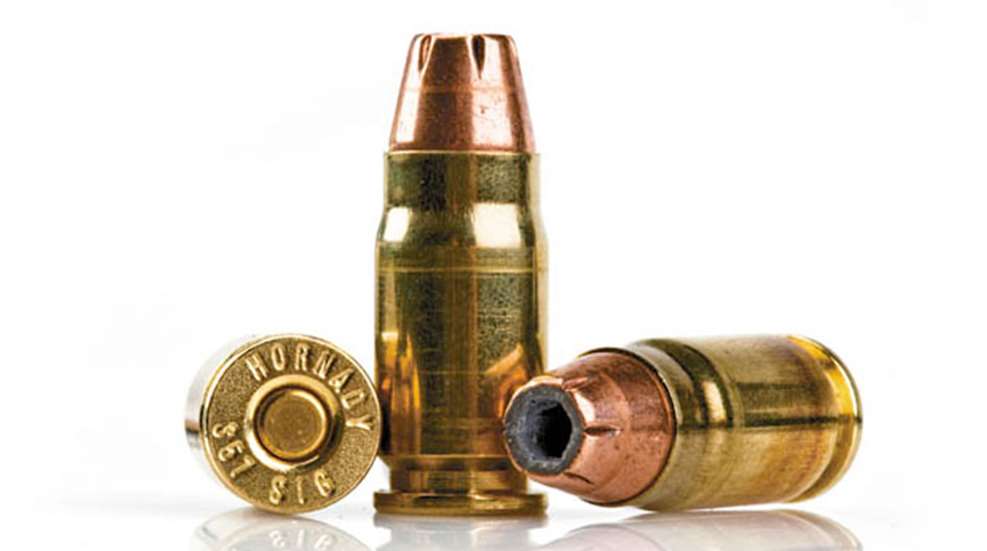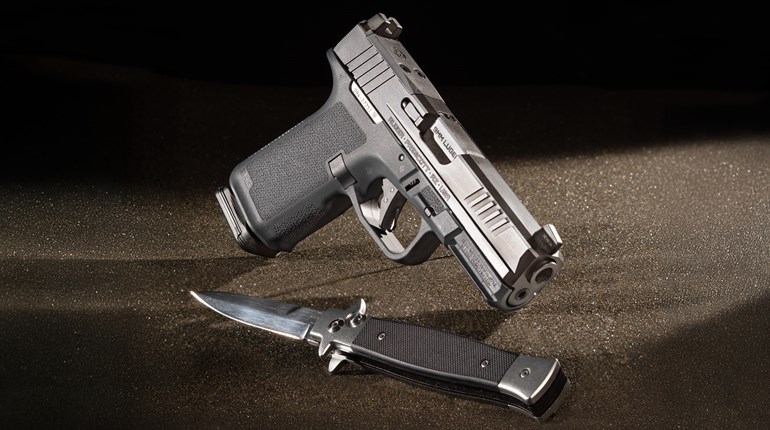
For reasons I do not understand, the great little .357 SIG cartridge is not getting the attention it deserves. It has been a viable self-defense and police-service load since 1994 and, while the on-the-shelf ammunition options were once pretty wide, they are slimming down by the year. New guns are likewise growing scarce, but there are some good signs, like the Smith & Wesson M&P357, in both standard and compact versions. At a point 10 years into the 21st century, the .357 SIG is nonetheless on a downhill slippery slope. This is a matter for serious consideration.
The .357 SIG cartridge was conceived at what was then SIG Arms in New Hampshire and developed jointly with Federal. It is just a little bit of an oversimplification to say that the round is a .40 S&W cartridge necked down to 9 mm, but that is the gist of it. This procedure does two basic things: First, it produces a 9 mm round that works well in pistols designed for the .40 S&W—the same case head means the extractor, ejector, firing pin, breech face and even magazine are the same for both—making the guns easy to manufacture. Second, the .357 SIG case may take 9 mm bullets at the front end, but its bottlenecked shape gives it the case capacity of much longer rounds—ergo, potentially higher velocity and energy levels. Remember, the .40 S&W was a round engineered for 9 mm-sized pistols, so the .357 SIG would make a much more powerful 9 mm-sized gun.
It got off to a roaring start in SIG's excellent, mid-sized P229 pistol, and eventually made it to the full-sized P226 and single-column P239 compact. Glock also chambered small-, medium- and large-framed pistols for the round.
Smith & Wesson offered a few Sigmas and currently makes both large and small M&Ps chambered in .357 SIG. There were a few other guns, like early Beretta Px4 Storms, so there was no lack of choice in .357 SIG-chambered pistols. It was the ammunition and its performance that raised a host of questions.
I can't recall another cartridge that drew the attention of ammo makers as quickly as the .357 SIG. Within a very short time span, we had ammunition from all of the big five American ammunition companies—Federal, Hornady, Remington, Speer and Winchester—as well as many smaller and foreign outfits. By a wide margin, the most-popular bullet weights were 124 and 125 grains. There were a small number of lighter loads and one or two heavier ones, but the 125-grain bullet was the virtual standard. Velocities with this stuff were pretty zippy, and it became obvious the cartridge was challenging the .357 Mag. in speed.
I once did an extensive shoot where I pitted the .357 SIG and the .357 Mag. against one another in guns with typical barrel lengths. The results got me called an outright liar by some and incompetent by others. To boil it down to basics, a range of 10 different 125-grain .357 SIG loads in a P229 pistol averaged 1,350 fps. A range of 10, 125-grain .357 Mag. loads in a Smith & Wesson Model 19 revolver with a 4-inch barrel averaged 1,270 fps. That is an 80-fps advantage to the SIG pistol. And by the way, the magnum lineup included that screaming-hot Remington load so popular with today's wheelgunners.
People look at the stubby little bottlenecked pistol cartridge that comprises the .357 SIG and compare it to the long, powerful round with the magic word "Magnum" on the headstamp. We all know that connotation, and are just unwilling or unable to believe a semi-auto pistol cartridge could possibly measure up to it. But by keeping the yardsticks even, with bullets of the same weight for both guns, it does. Sure, the magnum revolver is much more versatile with ammo, using up to 180-grain bullets. It is better for a wider range of needs. But, that doesn't change the fact that the SIG semi-automatic outran the mighty magnum on a level playing field.
In my first few years of affection for this curious little cartridge, I used some 6,000 rounds of the fodder. It is a snappy little round that takes a firm hand to control, but the cartridge shoots very flat out to 50 yards—maybe a little more. I can even stay on a B-27 target at 100 yards (OK, on most days). It should be obvious that modern semi-autos with deep magazines have a "the reload is in the gun" advantage. Smith & Wesson's M&P357 has a 15+1 capacity. The company's biggest .357 Mag. revolver is an eight-shot N-frame. That's exactly half as many 125-grain bullets.
Shooters who look at that bottlenecked cartridge and predict trouble just haven't tried it. I have yet to experience a malfunction in any .357 SIG pistol. That alone makes it superior fightin' iron.





































